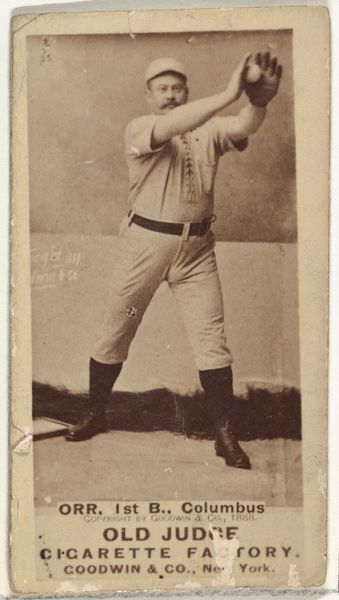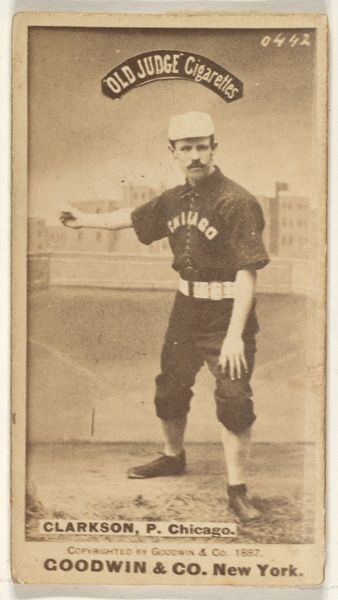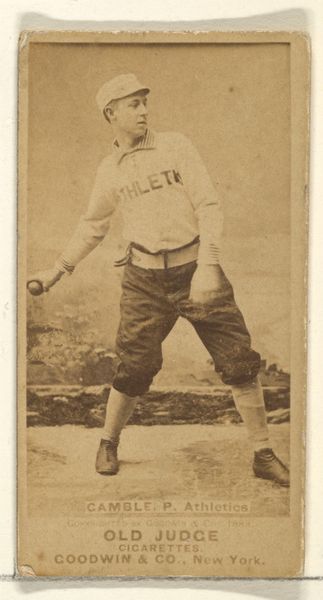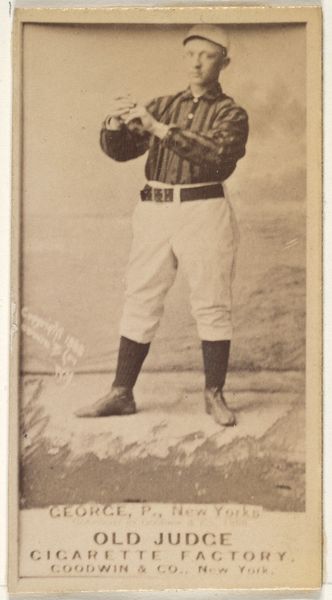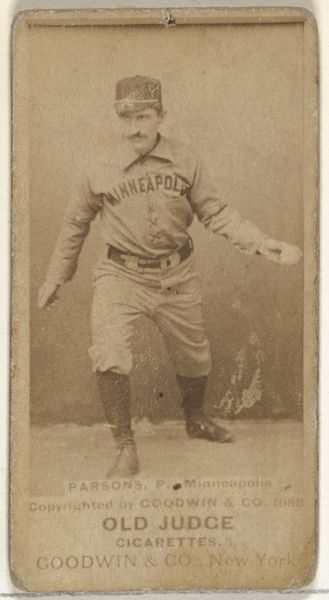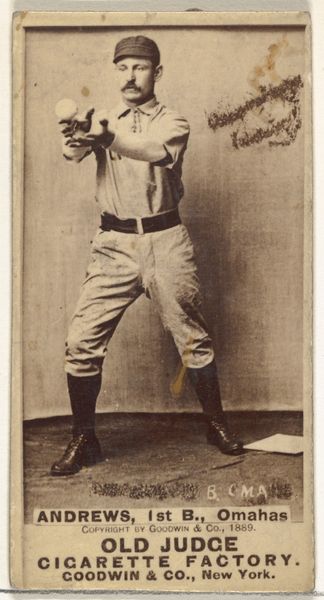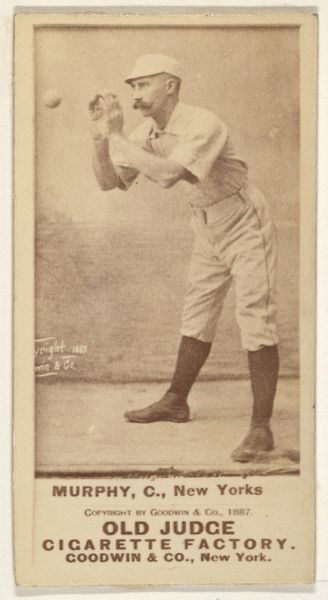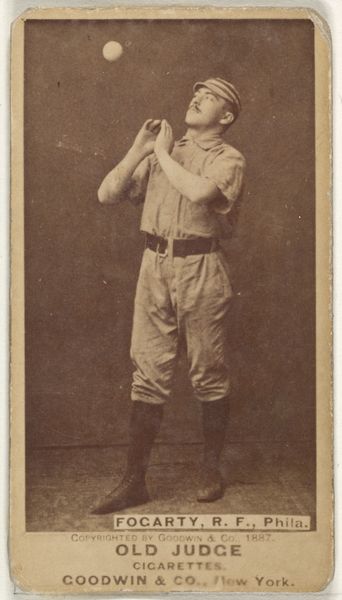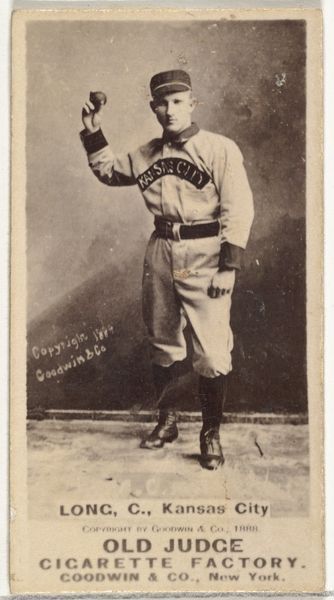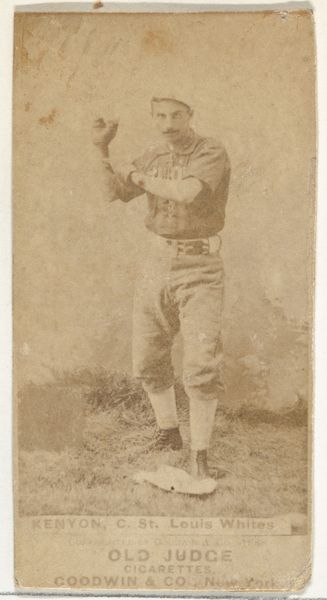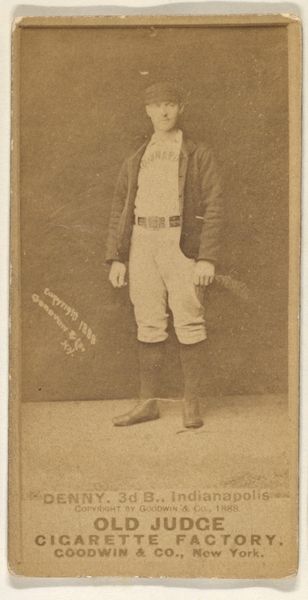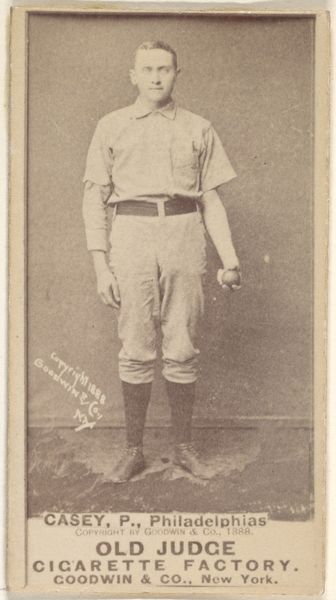
Marcus Elmore "Fido" Baldwin, Pitcher, Cleveland, from the Old Judge series (N172) for Old Judge Cigarettes 1887
0:00
0:00
drawing, print, daguerreotype, photography
#
portrait
#
drawing
#
pictorialism
# print
#
old engraving style
#
daguerreotype
#
baseball
#
photography
#
men
#
athlete
Dimensions: sheet: 2 11/16 x 1 3/8 in. (6.9 x 3.5 cm)
Copyright: Public Domain
Curator: Here we have a piece titled "Marcus Elmore 'Fido' Baldwin, Pitcher, Cleveland," an 1887 work produced as part of the Old Judge series for Old Judge Cigarettes. Editor: There's an undeniable sense of melancholy hanging over this piece. The sepia tones and slightly blurred edges evoke a feeling of a bygone era, a stillness despite capturing a figure in motion. Curator: Formally, note how the subject is centrally composed. The artist used careful tonal gradations to emphasize the form of Baldwin and create a hierarchy within the frame. Also, notice the graphic elements and how they add dimension. Editor: Absolutely, but beyond that, I'm struck by the context of this image within the world of late 19th-century commercialism. Baseball, still in its nascent stages, becomes intertwined with tobacco advertising, speaking volumes about early consumer culture and the commodification of athletes. Curator: Precisely! One cannot ignore how this object exploits its pictorial qualities. The photograph’s composition directs the gaze, and each area invites contemplation, fulfilling the goals for an object from Goodwin & Company. Editor: Right, but the photo is staged in a very controlled way, stripping him of individuality to turn him into a symbol. These promotional cards were targeted at a white male demographic, further marginalizing other groups. It’s essential to consider this type of historical positioning. Curator: A sharp observation. It is a reminder that photographic compositions from the time are rarely neutral and invite continued questioning about historical norms. Editor: Exactly! By viewing this card as more than a mere representation, we are encouraged to contemplate its role in the larger structure that promoted consumption through exclusionary representation. Curator: Indeed. It’s an exercise in appreciating form, while also acknowledging how such structure is affected by broader narratives of capitalism and consumer culture. Editor: It is a look into the history of our evolving cultural and social standards!
Comments
No comments
Be the first to comment and join the conversation on the ultimate creative platform.
